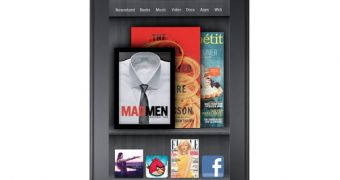When Amazon brought out the Fire tablet a few days ago, people were mildly to seriously shocked by the very low price, and it looks like the effect was just as strong on sales figures.
It is easy to assume whether or not a product will be successful based on the sales it scores on the first day of availability, though previous hype-raising plays an important role here as well.
Amazon's Kindle Fire tablet was not lacking in the promotion department and, when it appeared and brandished its $199 price, the ripples were big and wide.
The figure is the equivalent of 149.37 Euro, though users should always remember that European pricing doesn't usually reflect exchange rates (products most often end up more expensive that conversion would suggest).
Nonetheless, the fact is that the slate is so cheap that people placed order for it in the tens of thousands.
In fact, the product didn't fall short by much of scoring 100,000 orders in the first day of commercial availability.
Being a rival to slates priced at $499 (479 Euro in Europe) definitely did not go by unnoticed by anyone.
Analysts have already begun to say that slate makers would do well to emulate, even join Amazon for their next tablet projects.
Until that happens, however, the Kindle Fire more or less has everything it needs to cause a metaphorical rampage.
For those that want the exact number, the level of Kindle Fire orders was of around 95,000 units on day one, even as the rest of the new Kindle units (Kindle e-reader, Kindle Touch and Kindle Touch 3G) sold only 25,000 put together.
These figures are estimates made by eDataSource and, even if they turn out to be slightly off later, they are still a clear indicator of just how disruptive the product has the potential to become.

 14 DAY TRIAL //
14 DAY TRIAL //